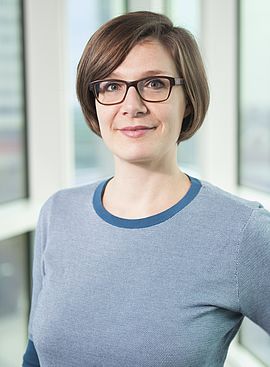The AIT Austrian Institute of Technology has carried out a user requirements survey to identify and understand user and site requirements for demand response. This initial stage of research will inform the creation of interfaces to control energy at home later in the project.
The Sim4Blocks will create innovative demand response (DR) services for residential and commercial applications. To work out what users expect from these services, AIT has carried out a survey to gauge people’s feelings on the different aspects of such systems.
Much of the information on user requirements was gathered from existing research on the subject, including a number of previous AIT projects. Results from prior projects had placed their focus on user requirements for smart grids rather than for DR measures. Therefore, AIT also carried out a quantitative online survey and qualitative interviews targeted specifically at user requirements for DR measures. “Much of what we found was comparable to the results of prior projects”, says Kathrin Röderer of AIT. “But some of the aspects, such as demand response, had not been covered and we got some interesting results there.”
Quantitative online survey
The main goal of the online study was to assess the residents’ attitudes towards different demand response measures considered for implementation within the use cases at the three pilot sites. A special focus was given to aspects that had not been covered in previous studies on comparable topics. 46 people from St. Cugat and 53 from Wüstenrot participated in the survey.
Residents in both the St. Cugat site in Spain and the Wüstenrot site in Germany were given a series of questions about a number of issues surrounding demand response, and were asked to rate how important certain features of a hypothetical demand response system would be to them. For instance, the residents were asked what they valued most in terms of what the system might be able to do. In both sites, protecting the environment and reducing monthly energy costs were valued highest.
With respect to flexibility for shifting loads to off-peak times when energy is cheap, people were most open to shifting washing clothes or dishes in both pilot sites. Preparation of meals, use of home entertainment, and bathing/showering were all seen as less easily moved. “Many of the participants also expressed concerns about control”, says Röderer. In general, they wanted to remain in charge and give their explicit consent before anything is changed. “This, of course, will be taken into account when designing systems within the project. These control options have to be represented in the interface, and it should be made easy to set those control settings, not hidden behind some complex menu.”
Qualitative interviews
Qualitative interviews were carried out to gauge the behaviour potential of employees and visitors of the town hall building at the German pilot site Wüstenrot. The interviews focused on individual potentials to save energy at the workplace or when visiting a public building, respectively.
Participants were asked how they thought they could save more energy at the workplace, whether load shifting could be possible, how motivated they were to save more energy in the workplace, how they thought local government had promoted environmental conservation, and whether there were possibilities for visitors to contribute towards energy savings.
Conclusions from the survey
Although each pilot project site has its own individual characteristics (type of housing, social level of tenants, different sources of power generation, technology, different tariff market, weather, etc.), all share, to a greater or lesser extent, the business and user requirements to implement DR services in each of them.
Many of the empirically extracted requirements in the online survey and the qualitative interviews match prior findings. However, new insights were obtained in domains specific for the Sim4Blocks project, such as demand response and automation experience. Differences between pilot sites appeared, but in most variables the two sites were comparable.
There is a need to consider both business and user requirements equally in developing innovative DR services. Some of the requirements are more closely connected than others and have to be examined from both angles (e.g., load shifting has implications from technical as well as from user perspectives). Including the user perspective into the technical field of DR innovation is highly important as it ensures technology acceptance and long-term use of technology on the user side.
With specific respect to user requirements, it is critical that the benefits of DR systems are communicated clearly and effectively. However, these benefits do not necessarily have to be financial; a contribution to environmental protection can also be very motivating and fosters customer trust in the system and in their energy provider.
Next steps
AIT will use the results from this study in the next step of their work for Sim4Blocks, which will be working on creating the interfaces for end users. “We will have an interface workshop to discuss which interfaces are needed and brainstorm our options,” says Röderer. “Once we have decided upon these, they will be designed and tested in an extensive field trial at the three pilot sites.”



